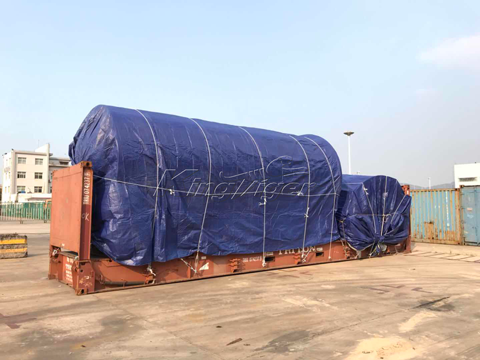Tire recycling is becoming more and more popular due to the accumulation of discarded tires. This poses a huge risk to the environment. Statics indicate that there are more than one billion scrap tires generated annually, worldwide. This means that there needs to be a sense of urgency when it comes to converting these scraps into reusable materials.
In order to effectively convert an end-life tire into a usable product, you need to use a tire recycling machine. A tire recycling plant simply refers to a waste processing system that allows old unwanted tires to be converted to new utilized products.

Tire Recycling Plant
How Does a Tire Recycling Plant Work?
One of the most popular methods of recycling waste tires is through pyrolysis plant. The plant uses thermal decomposition to turn waste rubber into steel wire, carbon black and pyrolysis oil.
The pyrolysis plant process entails:
- Shredding of unwanted tire into small pieces.
- Putting the pieces into a reactor.
- Burning all these pieces through a process knownas combustion.
- Combustion temperature should be very high, rangingfrom 300 to 950 degrees.
- When the temperature reaches 130 degrees itproduces oil gas which is passed through a cooling system.
- When the temperature cools, carbon black andsteel wire are collected.
Tire Recycling Plant Cost
There are a number of factors that directly or indirectly determine a tire recycling plant cost. These include:
Material and Quality of Machine: if a plant features high quality materials then the cost will be high. A tire recycling machine consists of casing, oil sluge tank, hydroseal, dedusting system, oil storage tank, gas condenser and an automatic slag removal system. If all the parts adopt high quality materials, the price of the recycling machine will go up. If you find a tire recycling machine whose price is lower than the market price, it’s important to pay keen attention to its quality. When it comes to reactor material, always opt for steel. This offers your reactor a service life of 7-8 years.
Model of the Pyrolysis Plant: There are a number of different tire recycling plants out there; each of them comes with a specified price tag. Some of the common types include BLJ-06, BLJ-10 and the BLJ-16.
New Technology: Manufactures are always adopting a new technology when it comes to developing recycling systems. This can affect the tire recycling cost. High technology translates to a higher cost. However, it is important to note that advanced technology has its benefits. Generally, a hi-tech system can save processing time and ensure a good cooling effect.
Labor: This are the people you need to hire when it comes to running the plant. They can be workers from all categories, professional, skilled and unskilled. Safety of workers should be adhered to and this can introduce the costs of firefighting facilities.
Preparing Factory Plant: There is a cost attached to preparing a tire recycling plant. One needs to consider aspects like cost of land, cement and brick. The cost of all these things will vary depending on local market.

Tire recycling machine
Choosing a Cost Efficient Tire Recycling Plant
- A cost effective recycling factory should provide a higher oil output: https://kingtigergroup.com/tyre-to-fuel-recycling-plant/. There are processing plants that have adopted technologies geared towards providing high oil output.
- An efficient tire recycling plant should provide safety. This eliminates losses from fire break outs and slag discharge.
- Another thing that makes a recycling plant to be cost efficient is automatic operation. A full automatic plant features an auto shredding system, auto feeding input and a carbon/steel discharging system.
- As mentioned earlier, a tire recycling plant that adopts new technology will save you money in the long run. A good example is the four-layer-dust removal advancement. Through this technology, recycling plants can efficiently perform the following processes, carbon adsorption, magnetic adsorption and water washing. Exhaust gas is also purified to meet environmental control standards.
The Reward of a Tire Recycling Plant
Apart from saving the environment, a tire recycling plant allows you to have three end products: carbon black, steel wire and pyrolysis oil. These products are used widely and have potentially high value. The benefits outweigh the tire recycling plant cost.
- Pyrolysis Oil: This oil can be refined through a distillation machine to produce diesel and gasoline. The oil is also popularly used in industries to fuel machines.
- Carbon Black: can be reprocessed into high quality carbon by the carbon black processing plant. The carbon black can also be used to make carbon brick through the use of briquetting equipment.
- Steel Wire: can be reprocessed or used to make steel and iron rod. It can also be sold directly to factories as a raw material for producing steel bars.